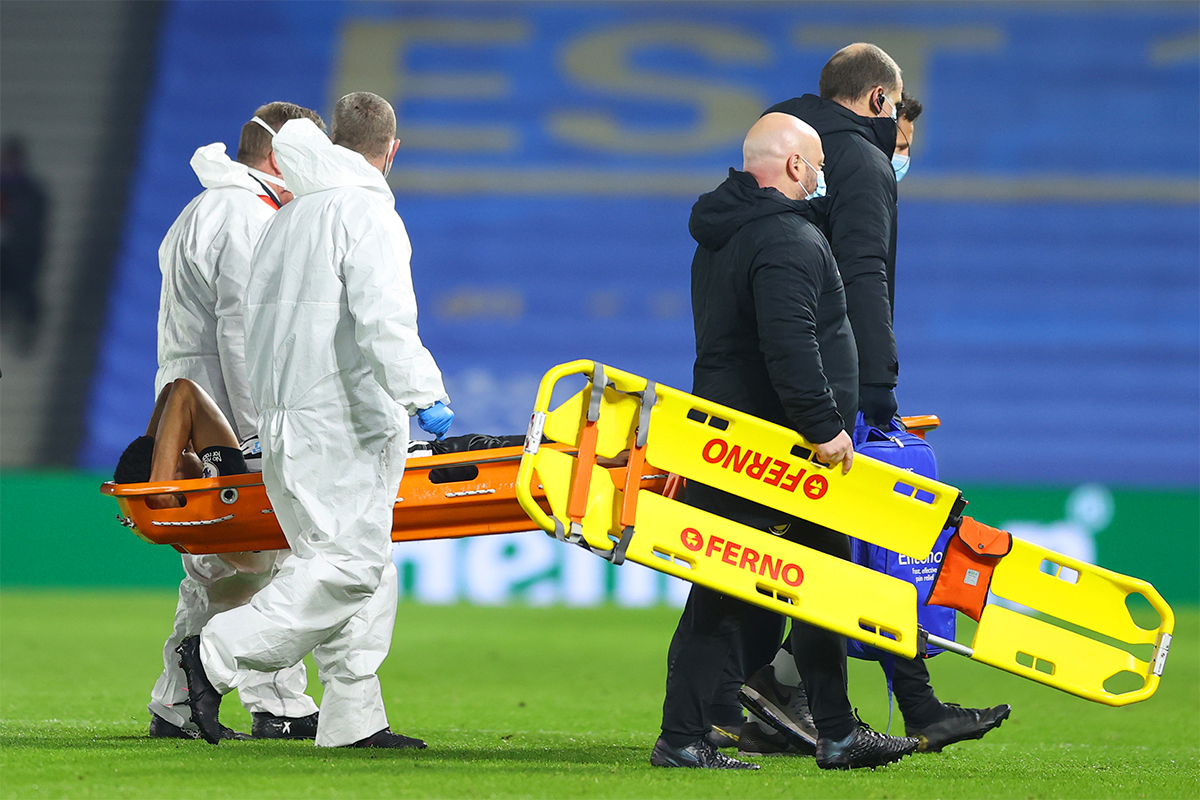During a English Premier League match in late 2020, Wolverhampton forward Raul Jimenez and Arsenal defender David Luiz clashed heads while jumping for a ball. It was just five minutes into the game, and Jimenez had to be carted off the field while hooked up to an oxygen tank. Luiz remained in the game until halftime, though, despite the fact that blood was seeping through the bandage on his head. Team management maintained that he “hadn’t lost consciousness.”
For Headway, a UK non-profit dedicated to supporting those who live with brain injuries, that fact was utterly irrelevant. In a statement after the game, the organization reminded league officials that just 10% of concussion cases actually include a loss of consciousness. “Too often in football, we see players returning to the pitch having undergone a concussion assessment — only to be withdrawn a few minutes later when it is clear that they are not fit to continue.” Sure enough, Luiz was officially substituted after complaining that he felt “uncomfortable heading the ball.”
It’s easy to forget that head trauma is prevalent in sports besides American football. Heartbreaking imagery and stories from the NFL have dominated the concussion conversation for so long, from the discovery of chronic traumatic encephalopathy (CTE) to stories of Hall of Fame players shooting themselves in the chest to preserve their brains for research. But blows to the head are common in soccer, too; they’re even instrumental, as a method to redirect balls out of danger, toward teammates or into the net. And for too long, even while youth soccer has cracked down on headers and contact plays, professional leagues have been reluctant to follow suit.
That seems poised to change now, as the top governing body in English football, the FA, recently announced new guidelines to limit plays that leave players susceptible to head trauma.

As first reported by The Athletic, English footballers will be limited to a maximum of 10 “higher-force” headers in any training week, which are defined as “any that follow a pass of more than 35 meters or corners, crosses, goal kicks and free kicks.” Clubs are also encouraged to draft “safety profiles” for each player, which will catalogue age, gender and position, as well as how frequently or forcefully they make headers. That information can then be used to keep a closer eye on players who need an extra reminder to protect themselves on the pitch.
The stipulations follow the Premier League’s decision to test a new in-game concussion protocol in the middle of last season. Since soccer only allows for three substitutions per game, concussed players have historically been dissuaded from leaving games, since doing so could mean depleting a substitution that could otherwise be used for a tactical change, or to replace a player physically unable to continue (that concussed players were long exempt from that group is, of course, a catastrophic mistake). But after the Luiz-Jimenez incident, the Premier League quickly rolled out a new rule allowing for two additional concussion-related substitutions per game. Troublingly, it has not yet been announced whether that trial will extend into the new season, which begins in two weeks.
These measures arrive after years of independent research have confirmed what seems pretty obvious to the naked eye: jumping up to hit a ball in mid-air with one’s head (or challenging someone who’s attempting to do so) can’t possibly be good for the brain. Researchers have had volunteers wear special, data-collecting mouth-guards; they’ve assessed the variance in headers by league (lower professional leagues, unsurprisingly, appear to play a more aggressive version of the game); they’ve figured out which sorts of kicks put more pressure on the neck; they’ve conducted sideline interviews where up to 80% of players fail concussion tests but would normally be allowed back in the game.
All told, the evidence was clearly enough for FA officials to do something, though critics point out that A) the “no more than 10 headers” concept will be impossible to police, and B) it feels somewhat arbitrary. That number wasn’t reached by an independent commission, or by … science. It was decided on by the league. So, will any of this actually work? It’s hard to tell. Heading is “discouraged” in youth leagues, but kids are still jumping up for balls on corner kicks. Similar to instances where linebackers forget themselves and can’t help but lead with the head on tackles, it’s difficult to override instincts that kick in in the heat of the moment.
Still, this is a step in the right direction, and as the FA points out (however dubious this distinction is), these are now “the most comprehensive adult football guidelines anywhere.” Soccer is easily the world’s most popular sport, and if the concussion conversation isn’t going to go international, it needs to start somewhere.
Whether you’re looking to get into shape, or just get out of a funk, The Charge has got you covered. Sign up for our new wellness newsletter today.


















